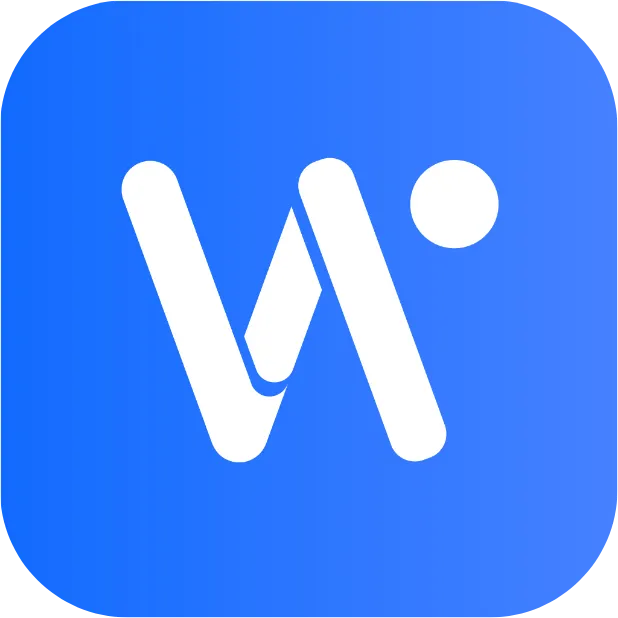Why your brand struggles in Southeast Asia? Google Ads strategies for 2025 success
2025 will be a critical turning point for the Southeast Asian e-commerce market. According to the latest report from Momentum Works, 82% of shopping transactions in the region have already taken place on online platforms, and the total merchandise transaction volume is expected to jump from US$159 billion in 2024 to US$370 billion in 2030. Behind this explosive growth is a profound change in consumer behavior - mobile shopping has become a daily routine, platform discounts drive decision-making, and cross-border consumption barriers are gradually disappearing. However, the platform-dominated market structure also brings new challenges. Retailers are faced with the problem of how to stand out in the crowded e-commerce platforms. It is in this context that Google Ads, as a strategic tool to break through platform restrictions, is being redefined by forward-looking companies. This article will deeply analyze how to use the technical advantages of Google Ads to achieve accurate customer contact, efficient conversion and brand value-added in Southeast Asia, a hot e-commerce land.
I. Explosive growth of Southeast Asian e-commerce market
1.1 Forecast of Southeast Asian e-commerce market size in 2025
The digital economy in Southeast Asia is expanding at an alarming rate. A joint study by Google and Temasek pointed out that the e-commerce market size in the region will exceed US$230 billion in 2025, with a compound annual growth rate of 24%. This growth momentum mainly comes from the increase in smartphone penetration in emerging markets such as Indonesia, Vietnam and the Philippines, as well as the awakening of middle-class consumption power. It is particularly noteworthy that the proportion of cross-border e-commerce transactions has climbed from 37% in 2020 to 45% in 2024, indicating that consumers' acceptance of international brands has greatly increased. The market is fragmented. Although platforms such as Lazada and Shopee dominate, social e-commerce and vertical professional platforms such as TikTok Shop are rapidly eroding market share. This diversified competition pattern has created a special opportunity window for precise advertising.
1.2 Analysis of the current status of platform-led shopping transactions
The current Southeast Asian e-commerce ecosystem presents the distinctive characteristics of "platform monopoly and brand restriction". Data shows that more than 80% of consumers will complete the entire process from search to purchase directly on the e-commerce platform, which makes the traffic acquisition cost of the brand's official website high. Although the in-site advertising tools provided by the platform are convenient, there is a data island problem, and retailers find it difficult to obtain a complete user portrait. More importantly, the platform algorithm favors low-priced goods, resulting in a systematic weakening of the brand's premium ability. In this environment, successful companies such as Indonesian beauty brand Wardah have begun to adopt a dual-track strategy of "platform sales + Google Ads traffic diversion", establishing a user access channel independent of the platform through search ads and Display advertising network (GDN), and converting platform transactions into sustainable customer assets.

II. The strategic value of Google Ads in the Southeast Asian e-commerce market
2.1 Advertising solutions that break through platform restrictions
In the platform-dominated Southeast Asian market, Google Ads provides rare "data autonomy" and "traffic control rights". Through the combined use of search ads and shopping ads, brands can guide consumers directly from general product searches to optimized landing pages, breaking away from the cruel price comparison environment on the platform. Empirical research shows that brands that adopt the "Google Ads traffic + platform acceptance" strategy have a customer lifetime value (LTV) that is 2.3 times higher than pure platform sellers. On the technical level, merchants can use Google Merchant Center to connect with the e-commerce platform API to achieve real-time synchronization of inventory and prices, and then automatically promote high-profit products through smart shopping ads. This method not only solves the problem of crowded advertising space on the platform, but more importantly, it establishes a consumer data asset that can be deposited.
2.2 Technical advantages of accurately reaching target customers
Google Ads' machine learning algorithm has shown amazing adaptability in the multicultural environment of Southeast Asia. Taking audience targeting as an example, through the "similar audience" function, brands can automatically expand the potential buyer group based on existing customer characteristics. In actual testing in the Indonesian market, the CPA of this method is 38% lower than traditional demographic targeting. Remarketing strategies are particularly effective. Dynamic ads placed for users who abandon shopping carts have a conversion rate 72% higher than ordinary display ads. What is more noteworthy is the "geographic bid adjustment" function, which allows differentiated bids to be set for physical scenes such as shopping malls and commercial areas. This online and offline integration strategy has been successfully applied by Malaysian furniture brand Notti, and the advertising conversion cost within 3 kilometers of the physical store has dropped by 41%.
III. Key strategies for seizing the market in actual Google Ads
3.1 Application of ROAS-oriented intelligent bidding system
In the Southeast Asian market with limited budgets, ROAS (return on advertising expenditure)-oriented strategies have become a performance watershed. The transformation case of Italian cosmeceuticals brand Miamo is very inspiring: they abandoned the fixed daily budget model and set ranges (minimum 3.5 to ensure profitability, maximum 6.0 to pursue growth), and AI automatically adjusted bids. The results showed that the conversion rate increased by 40% year-on-year and the revenue increased by 70%. What is even more amazing is that the conversion rate in Q1 2025 soared by 102% compared with the same period of the previous year. This dynamic approach is particularly suitable for the festive shopping season in Southeast Asia. During Ramadan, the target can be temporarily lowered to seize market share, while maintaining a high profit orientation on weekdays. In terms of technical execution, it is necessary to strictly distinguish between "brand word" and "generic word" ad groups. The ROAS of the former can usually reach 8-12 times, while the latter needs to cooperate with remarketing strategies to achieve break-even.
3.2 Key points for designing demand-generated advertising campaigns
Consumers in Southeast Asia are at different stages of cognition and need to be fully covered by the "funnel advertising matrix". The top funnel should focus on educational content. For example, Indonesian e-wallet OVO used YouTube video ads (now switched to GDN multimedia ads) to explain the advantages of cashless payment, and the brand search volume increased by 58%. The middle funnel is the key to success. You can use the combination of "display ads + search ads remarketing lists" to target users who have browsed competing products or related content. Hanabishi, a Philippine home appliance brand, found that the conversion cost of comparative ads targeting users who searched for "how to buy air conditioners" was 33% lower than that of ordinary display ads. The bottom funnel needs to strengthen social recognition and integrate user reviews and limited-time offers. After the dynamic remarketing ads of Thai beauty platform Konvy added real-time inventory prompts, the abandonment rate of shopping carts dropped by 29%.
3.3 Budget Allocation Skills for Seasonal Promotions
The Southeast Asian market has a high concentration of festivals. The three major periods of Double 11, Double 12 and Ramadan contribute 45% of the annual e-commerce sales. Smart advertisers will adopt the "satellite advertising campaign" strategy: launch brand awareness advertising 2 months in advance, increase product feature advertising 1 month before the festival, and focus on promotional advertising during the week of the big promotion. In terms of budget allocation, the actual experience of the Vietnamese fashion brand Coolmate shows that 40% of the budget should be used for audience cultivation before the festival, 30% for precise harvesting during the week, and the remaining 30% for remarketing after the festival. On the technical level, it is necessary to set up "festival-specific conversion tracking" to distinguish between regular sales and promotional sales, because the latter usually has a 15-20% lower repurchase rate. Optimizing the bidding time period is also crucial. Data from the Indonesian market shows that the advertising conversion rate from 8 to 11 pm is 3 times higher than that during the day, which requires a corresponding increase in the bidding coefficient during this period.

IV. Successful Case Analysis: International Brand Localization Experience
4.1 Miamo’s ROAS Strategy Transformation Record
The Southeast Asian expansion strategy of Italian cosmetics brand Miamo is a classic case of optimization. The brand originally adopted a rigid daily budget system, which led to the loss of high-value search traffic. After the daily budget was exhausted, even if a user searched for "Miamo sunscreen", the ad could not be displayed. After the transformation to target bidding, the system automatically tilted the advertising budget to the high conversion probability period, and the display share jumped from 80% to 94%. Even smarter is its seasonal adjustment strategy: during Black Friday, the ROAS target was actively reduced from 4.0 to 2.5, sacrificing short-term profits in exchange for market share. As a result, sales during the period increased by 240% year-on-year. This flexible thinking has now been extended to advertising format innovation. The multimedia ads they designed for the new product Global Eye Defense, combined with local models and UV index reminders, had a click-through rate that exceeded the industry benchmark by 42%.
4.2 Mercari's cross-channel user acquisition solution
When Mercari, a Japanese second-hand trading platform, entered Southeast Asia, it faced a serious "dormant user" problem - millions of downloads but no transactions. Its solution lies in the "web first" strategy: simplifying the purchase process and allowing users to register at the same time when checking out (originally required to register before purchasing), this change increased the web conversion rate by 65%. More importantly, it is deeply integrated with Google Ads, importing in-app search data into the advertising system, accurately targeting users who search for "second-hand designer bags" but have not installed the app. Technically, "deep link" and "Web to App Connect" are used, and when users click on the ad, they are automatically redirected to the corresponding page of the App to achieve a seamless experience. Data shows that this cross-channel strategy reduces customer acquisition costs by 38%, while the user lifetime value increases by 25%, proving the effectiveness of its "cumulative investment" concept.
4.3 Best Practices for AI Advertising Optimization in Asia Pacific
A joint study by Google and Accenture revealed that leading companies in the Asia Pacific region have deeply integrated AI into advertising optimization. The AI creative engine developed by Korean beauty group Amorepacific can automatically generate hundreds of ad variations and dynamically adjust them based on real-time performance, increasing ad relevance scores by 88%. Operationally, these companies follow a "test-learn-expand" cycle: first verify the AI model in a small market (such as Malaysia) and then promote it to the entire region. The case of Indonesian e-commerce giant Blibli is particularly outstanding. Its AI prediction system can predict the popularity of products 45 days in advance, and pre-purchase advertising traffic based on this. This forward-looking strategy has increased the return on advertising investment by 2.7 times during the promotion period. It is worth learning from its "human-machine collaboration" model: AI is responsible for real-time bidding and material selection, and the human team focuses on strategy formulation and exception handling. This division of labor has increased the efficiency of the advertising team by 60%.
V. Topkee's Google Ads solution
Topkee provides a one-stop online advertising service based on Google Ads, aiming to help companies effectively increase the number of potential customers and sales performance. Regardless of the size of the customer, we can provide tailor-made solutions to ensure the accuracy and maximum effectiveness of advertising through professional technical tools and strategic planning.
In terms of service architecture, Topkee will first conduct a comprehensive website evaluation and analysis. We use the latest website scoring tools to deeply diagnose the SEO status of the client's website and produce detailed problem reports and optimization suggestions. This stage not only includes technical SEO detection, but also structural analysis of website content to ensure that all page information meets the search engine optimization specifications and provides valuable content for the target audience. Through this basic work, the ranking position of the client's website in the search results can be significantly improved, thereby increasing brand exposure and conversion opportunities.
To achieve systematic management of advertising, Topkee has developed a TTO tool. The platform has a multi-account coordination function that can simultaneously manage the opening application, budget allocation and permission setting of multiple advertising accounts. Its core value lies in the perfect data tracking mechanism. Customers can accurately grasp the conversion path of various marketing activities through the flexible configuration of tag IDs. The system also supports automatic conversion event settings, and all data can be synchronized to the advertising background in real time, greatly reducing the time cost and error risk of manual operations. In terms of tracking technology, Topkee uses a self-developed TM system, which is more flexible than traditional UTM parameters. TM allows you to customize tracking rules based on multiple dimensions such as advertising source, media type, and event theme, and automatically generates a unique tracking link with TMID. This technology enables customers to clearly identify the quality of traffic from each channel, accurately evaluate the actual effectiveness of different advertising materials, and provide data support for subsequent strategy adjustments.

Conclusion:
The explosive growth of the Southeast Asian e-commerce market has brought both huge opportunities and fierce competition. Through the analysis of this article, it can be seen that Google Ads, as a strategic tool to break through platform restrictions, can help brands establish direct communication channels to consumers, achieve accurate reach and efficient conversion. From Miamo's ROAS optimization record to Mercari's cross-channel strategy, successful cases have confirmed the monetization ability of data-driven advertising. With the rapid evolution of AI technology, digital advertising in 2025 will be more intelligent and automated, but the core remains unchanged is the deep understanding of local consumer needs. We recommend that companies layout the Southeast Asian market as soon as possible, establish a professional advertising optimization team, or seek agency partners with local experience. If you want to learn more about how to customize Google Ads strategies for your brand, please contact our professional consulting team to obtain personalized market entry solutions.







